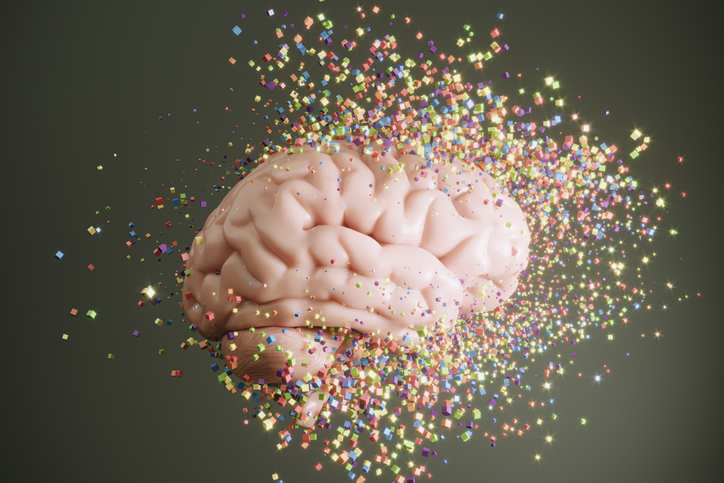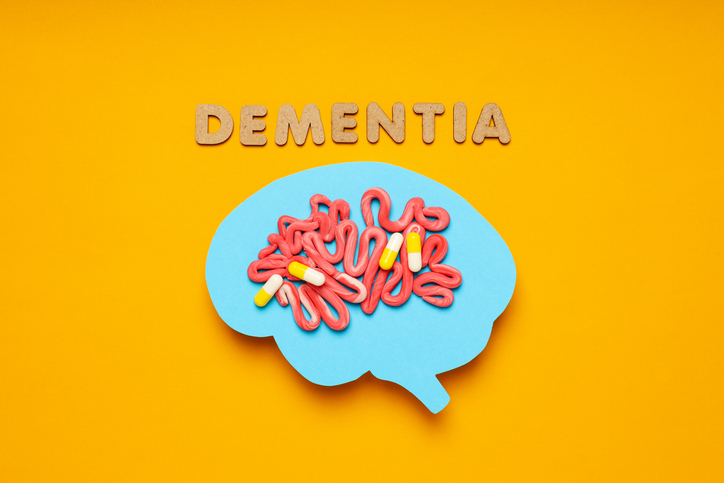Dr. Ponni Subbiah on Treating Psychosis Associated with Dementia
By Rob Dillard - Last Updated: April 27, 2023Acadia Pharmaceuticals Inc. recently announced that the New England Journal of Medicine published results from a Phase 3, double-blind, placebo-controlled relapse prevention trial, called the HARMONY study, designed to evaluate the efficacy and safety of pimavanserin for the treatment of psychosis associated across five clinically diagnosed subtypes of dementia.
DocWire News spoke with Dr. Ponni Subbiah, Chief Medical Officer, Acadia, to learn more about this trial and its significance.
DocWire News: Can you tell us about the HARMONY study?
Dr. Ponni Subbiah: Sure. So first before I discuss the HARMONY study specifically, let’s step back and understand why new treatments are important in this area. So about 2.5 million Americans are suffering from psychosis-related dementia in the United States. However, there’s no approved treatment for this that has been approved by the FDA. However, psychosis, when it occurs, can lead to significant burden. So if you can imagine a loved one that the caregiver is providing for experiencing hallucinations, seeing things or people like, for example, small kids in a corner of their room or feeling like their spouse or their caregiver is trying to poison them, meaning a delusion. It’s a fixed false belief that someone is trying to poison them. So they refuse to eat, or they refuse to go outside because they’re scared someone is going to harm them.
So all of those things can lead to significant, as you can imagine, fear and anxiety for these patients, but also increased burden for their caregivers, right? And so clinicians often struggle when they do reach that point where they need treatments, what to do? There is no approved treatment. So with that, they often use off-label antipsychotics that are in the market because they’re at a wits’ end. However, these antipsychotics because of the way they work, they can often lead to treatment limiting side effects, such as, now remember, this is an elderly population, they can cause impairment in their cognition. It can cause these side effects called extrapyramidal symptoms, which are motor problems that can lead to falls. It can also accelerate the underlying cognition. And because of all of this and the burden to the caregiver, it can increase the risk of hospitalizations, as well as a placement in nursing homes or long-term care institutions. So for these reasons, Acadia organized in working with the FDA, the HARMONY trial, which is a pivotal phase three trial.
Now to explain the HARMONY trial further, it is a trial that really was designed to mirror clinical practice. So in clinical practice, a clinician will want to know three things. One is, is the drug improving the symptoms that the patient is experiencing? Number two, if there’s improvement, is that improvement maintained? And three, is the drug safe? Well, that’s what the HARMONY Study does. In the open-label phase, which is the first part, patients in the trial receive pimavanserin, which is what’s called a serotonin-targeting agent. It specifically targets the 5HT2A receptors. And this is important because they are thought to play a role in the development of psychosis. So in the open-label phase, these patients receive pimavanserin, and if there is a strong response, which was pre-specified by specific responder criteria, after 12 weeks, if there was that improvement that I mentioned earlier, then they were randomized into the second part, which is a double-blind phase.
Now in the double-blind phase, what happened was we were trying to assess if you continued pimavanserin, does that make a difference versus stopping the treatment, which is where they stopped the treatment, they were put on placebo. And what it showed was that the HARMONY met its primary endpoint, which was to assess what is the time from randomization in the double-blind phase to relapse of the psychosis? And what it showed was there was a statistically significant difference between those that continued the active drug pimavanserin versus those that were put on placebo. There was actually a three-fold difference and was statistically significant with a P value of 0.005. Now, in addition to the primary endpoint, the secondary endpoint was also met, which was the time from randomization to discontinuation in the trial for any reason. And that was also statistically significant with almost 2.2-fold difference, favoring the pimavanserin group versus the placebo group with a P value of 0.005.
Now the third question I reviewed with you that a clinician will ask is, is this drug safe? Now this drug over the nine-month period of the trial was very well tolerated. The most common side effects that we saw with the pimavanserin group compared to the placebo group was constipation, headache, and urinary tract infection. And the pimavanserin was not associated with any cognitive impairment or any motor impairment, which is again very important in these elderly, vulnerable population.
Did you find the results surprising?
Surprising in terms of the overall robust, positive efficacy was truly a surprise. Now, the reason I say that is because we knew, as I mentioned, that the serotonin system does play a role in psychosis and pimavanserin targets serotonin receptors, specifically the 5HT2 receptors. So on one hand, it wasn’t surprising because the mechanism of action and the results we have seen in previous studies gave a signal that, in a phase two study we did in Alzheimer’s disease psychosis, there was positive efficacy. So we had evidence to build upon, but what we did in this relapse prevention design, we did have an independent data safety monitoring board. And there was a pre-specification to do an interim analysis after prominently 40 relapse events. And so when these interim analysis was done, the stopping boundary was set so that if there’s overwhelming positive efficacy, the trial will be stopped early. And so that was a pleasant surprise because it was overwhelmingly positive. And that’s why the trial was stopped early with both robust efficacy, as well as safety proven in the trial.
What were the study limitations?
Yes. As with any trial design, there’s always the advantages and as well as the limitations. And that is one of the reasons actually, because of the strengths that we designed the relapse prevention design, because for three reasons, one is that it reflected clinical practice. Two was, it will enable us to see these benefits maintained. Three was, we’d minimize exposure to placebo in this elderly, vulnerable population. And four, we maximized exposure of the subjects to effective treatment. So those were the advantages. But what were the limitations? Well, for the same reasons, because it was a relapse prevention design, if folks subject met that relapse criteria, they had to drop out of the study. So we weren’t able to gather additional data on those patients who may have continued to benefit beyond after they dropped out. So that’s one limitation, but we felt the advantages far outweighed some of the limitations.
What are the clinical implications of the HARMONY study?
So right now, eight million Americans, almost eight million are suffering from dementia, which 2.5 million Americans are suffering from psychosis. Now important to remember that only about half of them are being treated. It’s a huge, unmet need, significant cause of burden and stress for the caregiver, and significant societal costs. We know that when a patient with dementia develops psychosis, there’s increase in acceleration of their cognitive impairment, there’s increase in risk of hospitalization, institutional care. So there’s personal costs for the patient and their families, but also societal costs as well. So there is huge unmet needs.
Now keep in mind, there are right now, globally, about 37 to 40 million people living with dementia. This is predicted to triple by 2050. Now in America, especially with aging of the population, this is just going to get more as the prevalence increases. So it’s critical we develop solutions for these type of symptoms. Now, remember dementia is often viewed as a memory problem or a thinking problem, but it’s more than that. Dementia is yes, there is cognitive impairment, but there’s also impairment in the way the patients are behaving and in the manifestation, neuropsychiatric symptoms such as psychosis. However, that area needs to have more investment, more attention, similar to the cognition part of the equation.
*How prevalent is dementia-related psychosis, and is it underdiagnosed?
Well, first is that the HARMONY Study met its primary and secondary end points with statistical significance and clinical meaningfulness. At the same time, it confirmed the safety of use of this drug in this elderly, vulnerable population without causing cognitive impairments or motor impairment. So I think those are key, key things that will bring another solution to the marketplace if it’s approved by the FDA.
Any closing thoughts?
Yes. I just want to just remind everybody, psychosis are terms. They’re words, hallucinations, delusions, but I think if we put ourselves in the patient and families, in their shoes, imagine your mother or father imagining there is a child or a stranger in the corner of their bedroom intermittently. That would be really scary for most of us. And often because of their dementia, they’re not always able to articulate their fear, their distress. So there’s significant burden for the patient, but at the same time, imagine the caregiver who is dealing with their loved one, accusing them of trying to poison them or trying to kill them and sometimes acting out and even physically hurting them. So those are things that currently psychosis is very underdiagnosed, and we need to do more education to screen for psychosis in these patients. And at the same time, we need to have solutions that can help patients and their caregivers in helping them resolve these symptoms when they do appear.







 © 2025 Mashup Media, LLC, a Formedics Property. All Rights Reserved.
© 2025 Mashup Media, LLC, a Formedics Property. All Rights Reserved.